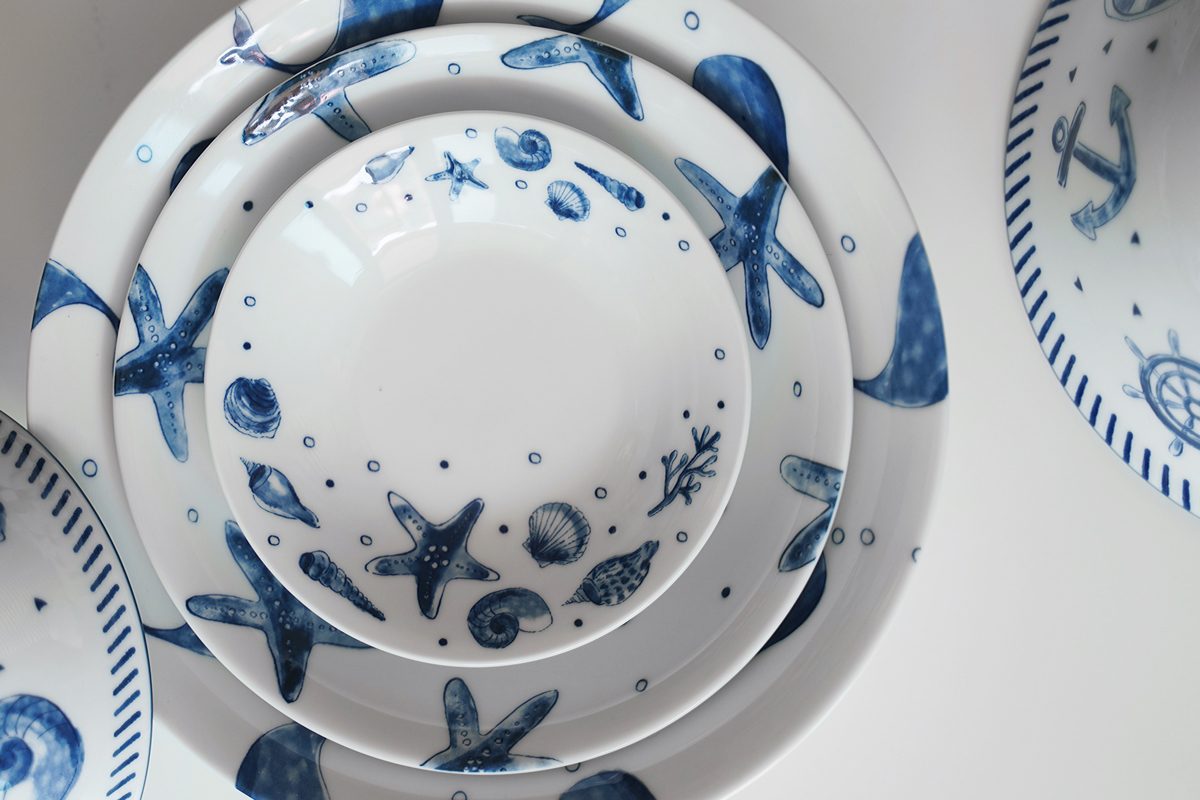If you are planning to open your own coffee store, then this article is a must-read for you. If you want to serve your customers a cup of rich and flavorful coffee, in addition to having good quality coffee beans and the right brewing method, it is very important to choose the right coffee cup.
It is said that the size of the coffee cup can determine the strength of a cup of coffee. In order to keep the coffee full-bodied and slow down the temperature drop, coffee cups are generally thicker.
Why you need a coffee cup?
Standard coffee cups come in sets, including cups, saucers, and spoons.
Americano will put milk and sugar on the saucer, making it easy to mix to individual taste. Some cafes also use saucers to hold cookies or desserts.
Ordinary glass cups have the risk of blowing up when they are hot or cold, so coffee cups usually need to choose materials with a higher temperature tolerance, such as ceramic. Where bone china has a better insulation effect than ordinary ceramic, which can make the coffee in the cup, the temperature drops more slowly to ensure a greater degree of taste.

How to choose the right coffee cup?
1. Size of coffee cup
(1) Small coffee cups under 100 ml
Mostly used for strong and hot espresso or single-serve coffee. If you want to serve espresso, pour about 50 ml at a time. If you want to serve espresso, pour about 50 ml at a time, which is half a cup, and you can almost drink it all in one sip.
(2) Medium cups of about 200 ml
This is the most common coffee cup. General fancy coffee as long as it is not particularly。 This is the most common cup. The size is just right, giving you enough space to add milk and sugar.
(3) Large cups of 300 ml or more.
Coffee with a lot of milk, such as latte or mocha, mostly uses mugs. On the one hand, it is enjoyable to drink, and on the other hand, there is enough space for the milk and sugar to mix well and give off a burst. There is also enough room for the milk and sugar to mix well and give off an enticing aroma.
2. Material of coffee cup
(1) Glass
Glass cups will not affect the taste of coffee, but they will not hold heat as well as ceramic cups. And the temperature of the coffee liquid will affect its taste. So when drinking coffee from a glass cup, make sure the coffee is hot and not cold.
(2) Stainless Steel
Stainless steel is virtually indestructible. Unlike glass, stainless steel holds heat well. Because the metal is a natural conductor of heat, it is also relatively easy to clean. Although it is also visually appealing, its’ appearance can easily be affected by grease and fingerprints on the metal surface.
The acidity in coffee causes the slow breakdown of stainless steel and releases tiny particles of potentially toxic substances such as nickel. While this is unlikely to cause significant health problems for most people, it is still recommended that people drink only from stainless steel cups, not coffee.
(3) Reinforced plastics
Because plastic is cheap and easy to manufacture, reinforced heat-resistant plastic is often used to make coffee mug bottles and cups. Although plastic is not as strong as stainless steel, it can still hold coffee well. However, plastic cups are usually not as durable as cups made of other materials such as stainless steel. In addition to this, plastic can also accumulate some unpleasant flavors as it is used over time, which can affect the taste of the coffee.
(4) Ceramic
Ceramic coffee mugs are very popular and are divided into porcelain, stoneware, and bone china. They are light in weight and hold heat well. They also do not affect the flavor of the contents of the cup, which makes them the ideal material for coffee mugs. And it can also be said that ceramic coffee mugs have all the advantages of other materials without any of the disadvantages.
Moreover, generally, ceramic mugs can be cleaned in the dishwasher.
3. The mouth of the coffee cup
(1) Straight mouth cup
The wall of the cup is perpendicular to the table, the coffee entrance is more concentrated, the taste buds directly contact the sweet and middle areas, and the taste is more balanced.
(2) Wide mouth cup
The cup mouth is relatively large and will flare outward, which also makes the coffee reach a wider range of taste buds better, allowing your tongue to feel the full flavor of the coffee, especially the acidic flavor experience.
4. The thickness of the wall of the coffee cup
The thick-walled coffee cup is good for heat preservation, and suitable for a latte, cappuccino, and other fancy coffee.
Thin-walled coffee cups have a more delicate population touch and can feel the different flavors shown in the process of coffee from hot to cold, which is more suitable for single-serve coffee.
5. The color of the coffee cup
The coffee liquid has an amber color and will usually clear. Although some coffees may have coffee grounds. In order to have a good visual enjoyment when tasting coffee, it is best to use a white coffee cup, especially if the interior is white.

How to warm a porcelain coffee cup?
Before drinking coffee must be a warm cup! Because when coffee is cold, the tannins in its composition will work and make the coffee very acidic, which in turn affects the taste of coffee.
Putting the coffee into a warm cup is an indispensable step in coffee tasting, but the method of warming the cup is very simple.
The easiest way is to pour hot water directly into the coffee cup and repeat the process a few times. A few times and the cup will be warm. If you have a dishwasher, put the coffee cups in it and warm them up. If you have several friends to entertain, you can boil a large pot of hot water and put several coffee cups into the hot water and boil them for just a few minutes.
How to maintain a coffee cup?
Coffee tends to leave coffee stains on the inside of the cup, how to clean it effectively without hurting the coffee cup?
1. A porcelain cup with good texture is usually not easy to attach to coffee stains. So rinse it immediately after drinking, it can be easily cleaned even without detergent.
2. You can use a neutral and mild detergent with a soft cloth to scrub. If the result is not good you can squeeze two drops of lemon juice into the cup, soak it for a while and then rinse it off. If the stain is really hard to remove, you can dip it in a little toothpaste and scrub it. But by all means, avoid cleaning with hard brushes and detergents that are too strong in alkalinity.
3. Nano sponge cup brush can also remove stains quickly by rubbing it directly with water.






